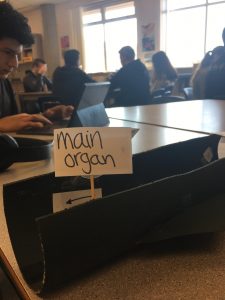The media that I chose for the First Peoples Principles of Learning, is the song ‘Colors of the Wind’ from the movie Pocahontas. The movie surrounds the idea of the importance of First Nations and how important their relations with the land are. Pocahontas tries to convince the people that are taking her land, on how important it is to the species, and the people in the nation.
For interconnectedness, everything and everyone is connected. Whatever happens to one thing, it affects everything around it. Pocahontas sings about how every rock, every tree, and every creature has a name, and they’re all big one family. Every place has a story. In spheres, we learned about the cycles, and how if one organism doesn’t get the nutrients it needs, everything around it will get affected. It is important to keep everything intact, because you don’t know its worth, and how important it is for us.
For sustainability, everything should remain the same, with no drastic change. Pocahontas sings about how ‘we [the nature] are all connected together, in a circle in a hoop that never ends’. She’s trying to explain how everything is in a cycle, and it’s been that way for the longest time. Everything and everyone remains in peace, and nothing harmful is going on. She also says ‘how high does the sycamore grow, if you cut it down then you’ll never know’. This relates to what we’re learning in science because it is best to keep things, especially the climate and this earth, the way it is. When things change too quickly, or too drastically (like the climate), things will change for the worst.
Pocahontas sang about the importance of nature, and how every land, and every tree, rock, etc had a story to tell. Everything and everyone is connected and if one gets ruined, the others get ruined. She also sang about the cycle that nature goes through, and how its been like that forever. Once you change a habit, that’s not sustained anymore, the world will change, but not for the better.







